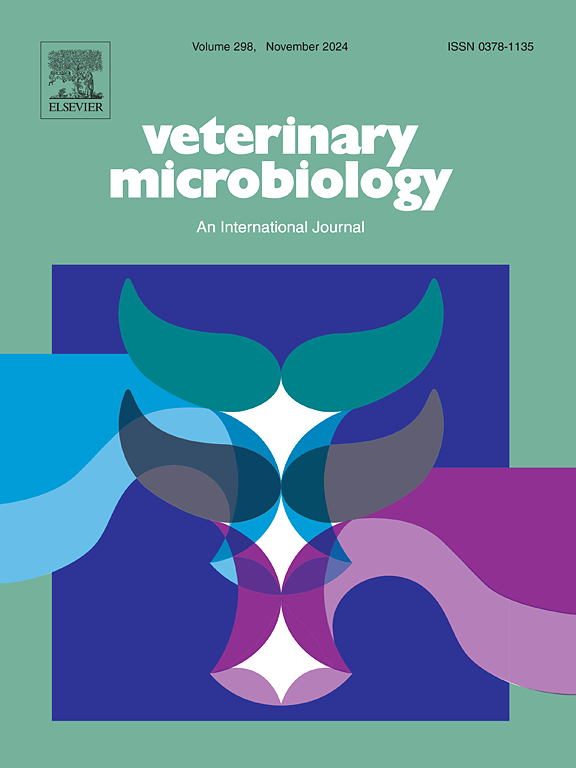Multi-epitope vaccines Xlc and Ddc against Glaesserella parasuis infection in mice
IF 2.4
2区 农林科学
Q3 MICROBIOLOGY
引用次数: 0
Abstract
Glaesserella parasuis (synonym Haemophilus parasuis) is the pathogenic agent of Glässer’s disease and causes huge economic losses in the world’s swine industry. Glaesserella parasuis (G. parasuis) can be divided into 15 serotypes, and the cross-protection effect of existing vaccines is not satisfactory. Therefore, the development of a vaccine to prevent multiple serotypes of G. parasuis infection is of great significance for the prevention and treatment of Glässer’s disease, but still faces many difficulties. In this study, the B-cell, CTL and Th cell epitopes of CtdB, CtbC, OppA, TbpB, HxuC, D15, Omp2 and Omp5 proteins were predicted by bioinformatics method, and multi-epitope proteins Xlc and Ddc were obtained by concatenating epitopes through linkers. After immunization with Xlc and Ddc, the levels of antibodies, IL-4, and IFN-γ in mice were significantly increased. The protective rates of Xlc+Ddc immunized mice against G. parasuis serotypes 4, 5, and 10 were 62.5 %, 75 %, and 87.5 %, respectively, which were higher than those of Xlc (37.5 %, 62.5 %, and 87.5 %) and Ddc (75 %, 25 %, and 50 %). Overall, the combination of multi-epitope proteins Xlc and Ddc had good immunogenicity and strong cross-protection against G. parasuis serotypes 4, 5, and 10. These results indicated that multi-epitope proteins Xlc and Ddc can serve as candidate subunit vaccines against G. parasuis infection.
求助全文
约1分钟内获得全文
求助全文
来源期刊

Veterinary microbiology
农林科学-兽医学
CiteScore
5.90
自引率
6.10%
发文量
221
审稿时长
52 days
期刊介绍:
Veterinary Microbiology is concerned with microbial (bacterial, fungal, viral) diseases of domesticated vertebrate animals (livestock, companion animals, fur-bearing animals, game, poultry, fish) that supply food, other useful products or companionship. In addition, Microbial diseases of wild animals living in captivity, or as members of the feral fauna will also be considered if the infections are of interest because of their interrelation with humans (zoonoses) and/or domestic animals. Studies of antimicrobial resistance are also included, provided that the results represent a substantial advance in knowledge. Authors are strongly encouraged to read - prior to submission - the Editorials (''Scope or cope'' and ''Scope or cope II'') published previously in the journal. The Editors reserve the right to suggest submission to another journal for those papers which they feel would be more appropriate for consideration by that journal.
Original research papers of high quality and novelty on aspects of control, host response, molecular biology, pathogenesis, prevention, and treatment of microbial diseases of animals are published. Papers dealing primarily with immunology, epidemiology, molecular biology and antiviral or microbial agents will only be considered if they demonstrate a clear impact on a disease. Papers focusing solely on diagnostic techniques (such as another PCR protocol or ELISA) will not be published - focus should be on a microorganism and not on a particular technique. Papers only reporting microbial sequences, transcriptomics data, or proteomics data will not be considered unless the results represent a substantial advance in knowledge.
Drug trial papers will be considered if they have general application or significance. Papers on the identification of microorganisms will also be considered, but detailed taxonomic studies do not fall within the scope of the journal. Case reports will not be published, unless they have general application or contain novel aspects. Papers of geographically limited interest, which repeat what had been established elsewhere will not be considered. The readership of the journal is global.
 求助内容:
求助内容: 应助结果提醒方式:
应助结果提醒方式:


